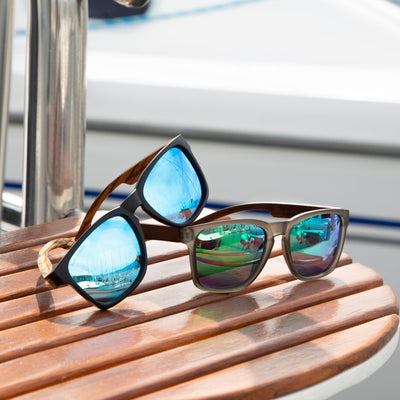Blue Planet

brand rating & evaluation
Blue Planet
Our ratings are based on a scale from 1 (Avoid) to 5 (Top Choice).
See how we rate.
The Shifting Gaia rating evaluates brands based on sustainable practices, ingredients and materials, and social responsibility, among others. Below are a few factors influencing this brand's score:
overview
about
Blue Planet produces eyewear from a range of sustainable materials, including upcycling plastic waste from eyewear manufacturing. Highlights
• Upcycled and recycled materials
• Donates a pair for each each pair sold
• Recyclable and sustainable packaging initiatives
sustainability
details:
Packaging
The brand uses a high proportion of recycled content in its packaging materials (at least 65% post-consumer recycled (PCR) material). Marketing inserts are printed with soy-based inks on FSC-certified recycled paper. However, Blue Planet does not explicitly mention the use of compostable materials or adhesive sustainability, and it's unclear if the microfiber pouch itself is made of recycled fibers.
Material Sustainability
The company uses a variety of eco-friendly materials, often combining natural and recycled components in a single frame. Many Blue Planet frames incorporate bamboo (e.g. in the “Bamboo + Wood” collection). Bamboo is a rapidly renewable resource, and the brand sources it for temples or entire frames in some designs. The brand also uses various woods in frames or temples. The brand calls its wood “sustainable”, but specific sourcing practices (e.g. FSC certification or origin) are not disclosed.
A cornerstone of Blue Planet's sustainability is its proprietary Eco-Process™, which reuses 60–75% recycled and reprocessed plastic content in its frames. This material comes from excess plastics left over from eyewear production that would normally become waste. One minor caveat is that the frames are not 100% recycled (they contain around 60–75% recycled content), meaning some virgin material is still used.
Some Blue Planet designs utilize cellulose acetate (a plant-derived plastic). Cellulose acetate is generally considered more eco-friendly than petroleum-based plastics. However, traditional acetate manufacturing involves plasticizers (historically phthalates) and chemical solvents. The brand doesn't provide specific details regarding this.
Blue Planet has indicated via wholesale channels that some styles are made from Rilsan® (castor bean oil-derived) bioplastic instead of conventional plastic. Castor-based nylon is a renewable, plant-derived material with no fossil fuel base.
Lens sustainability is challenging, as most optical lenses are made from polycarbonate or acrylic polymers. Many of Blue Planet's lenses are explicitly noted as BPA-free.
Energy Use and Footprint
When it comes to energy use and carbon footprint, Blue Planet Eco-Eyewear provides limited information publicly. The brand's sustainability messaging centers on materials and giving back, but it does not disclose data about manufacturing energy sources, greenhouse gas (GHG) emissions, or transportation methods. Blue Planet has planted thousands of trees via Trees for the Future, which somewhat mitigates their footprint.
Waste Management
The brand was founded specifically to address waste in eyewear manufacturing. During typical frame production, excess plastic and metal are “squeezed out” or cut off, and usually end up in landfills. Blue Planet's solution is to collect these excess scraps and reuse them to create new eyewear frames. There is, however, little publicly available information regarding waste mitigation in manufacturing beyond this.
Business Model
Blue Planet's business model blends affordable fashion with sustainability and philanthropy. In terms of mindful consumption, the brand encourages buying products that have a positive impact (environmentally and socially), but it is still a for-profit retail model selling accessories, so the encouragement of reduced consumption is moderate.
non-toxic
details:
The brand's use of natural and renewable materials (bamboo, wood) inherently avoids many toxic synthetics. Bamboo and wood are generally non-toxic to handle, though they may have a sealant or varnish. Blue Planet doesn't specify what coatings they use on wood.
For plastics, Blue Planet's Eco-Process™ recycled plastic frames are presumably made from polycarbonate or similar polymers. The brand highlights that many of their lenses and frame materials are BPA-free. Blue Planet's avoidance of lead, nickel, and BPA covers several major toxic concerns in eyewear.
social responsibility
details:
Information on Blue Planet's labor practices and supply chain ethics is scarce. The brand does not publish details about where its products are made or how workers are treated, which is a notable gap.
For every pair of eyewear sold, Blue Planet donates a pair of corrective glasses to a person in need.

